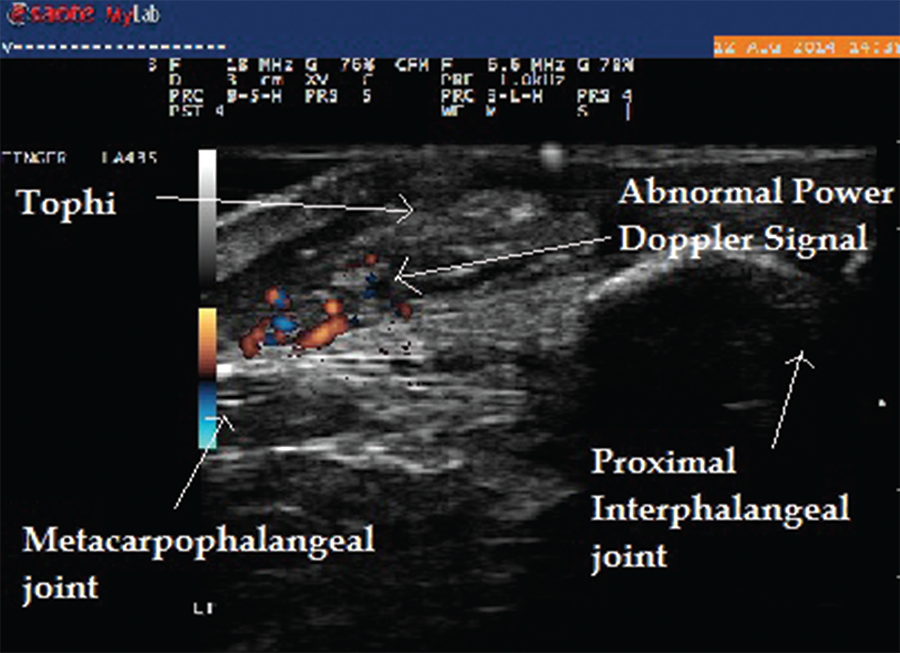Systematic Review of the Value of Ultrasound and Magnetic Resonance Musculoskeletal Imaging in the Evaluation of Response to Treatment of Gout
Ultrasound in gout: A useful tool for following urate-lowering therapy
Joint Bone Spine Volume 82, Issue 1, January 2015, Pages 42–44
Ultrasound sensitivity to changes in gout: a longitudinal study after two years of treatment
Reduction but not disappearance of Doppler signal after two years of treatment for gout. Do we need a more intensive treatment?

The current target of treatment in Gout is to reduce and maintain blood uric acid level to below 5-6 mg% (300-360 umol/L), though a less progressive sector (namely, the American College of Physicians) still advocates merely pain relief.
Opinion laggards notwithstanding, patients aspire to eventually go off therapy, to be cured. And cure is an achievable reality in Gout! But this goal requires most if not all gouty deposits to dissolve away. Takes time (years), but achievable, as long as uric acid is kept below saturation point (6.8 mg% or 400 umol/L at 37°C; much lower if you consider cooler extremities and nucleation effect). So the lower you target serum uric acid level, the faster you achieve tophi dissolution.
To target “cure” (bulk crystal dissolution) rather than no further crystal accretion, the measurable outcome must escalate beyond monitoring serum uric acid level to visualising resolution of urate deposits. This is where ultrasound rises to the occasion![]()
